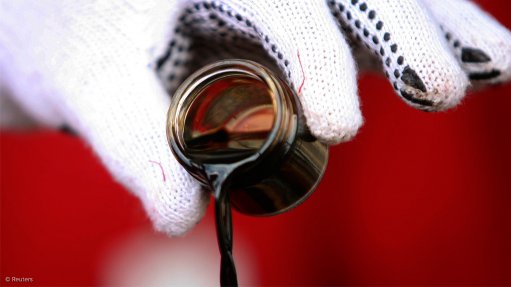
Photo by: Reuters
TORONTO (miningweekly.com) – US-based diversified miner Freeport-McMoRan swung to an eye-popping first-quarter net loss of $2.5-billion, or $2.38 a share, on the back of writing down the carrying value of its oil and gas properties and a related tax charge to establish a deferred tax valuation allowance.
The net loss compared with income attributable to common stock of $510-million, or $0.49 a share, in the comparable three months ended March 31 last year.
Excluding special items, among which counted a $2.4-billion, or $2.32 a share, oil and gas related impairment charge, Freeport reported an adjusted net loss attributable to common stock of $60-million, or $0.06 a share.
This was better than the average adjusted loss of $0.07 a share 21 Wall Street analysts had expected, on revenue of $4.06-billion.
Freeport explained that its oil and gas subsidiary, Freeport Oil & Gas at March 31, determined that the net capitalised costs of its proven US oil and gas properties exceeded the ceiling amount specified by the US Securities and Exchange Commission’s full-cost accounting rules, which resulted in the company recognising an impairment charge of $3.1-billion for the first quarter.
Net noncash mark-to-market losses and gains on oil and gas derivative contracts and other items also impacted the first quarters of 2015 and 2014.
Consolidated copper sales rose 10% to 960-million pounds. Freeport also reported selling 12% less gold at 263 000 oz, while molybdenum sales declined 15% to 23-million pounds. Oil output was down 22% at 12.5-million barrels of oil equivalents, compared with 16.1-million barrels of oil equivalents for the year-earlier period.
Revenues were $4.15-billion, down 17% year-on-year from just short of $5-billion.
The average realised copper price was 13% lower year-over-year at $2.72/lb, down from $3.14/lb a year earlier. The average realised gold price dropped 9% to $1 186/oz from $1 300/oz a year earlier.
Oil prices fell 40% to $56.51/bl, compared with realising, on average, $93.76/bl during the first-quarter last year.
Freeport said the consolidated unit net cash costs for the period averaged $1.64/lb of copper for mining operations and $20.26/bl of oil equivalents for oil and gas operations.
The company expected consolidated sales for the year of about 4.2-billion pounds of copper, 1.3-million ounces of gold, 95-million pounds of molybdenum and 52.3-million barrels of oil equivalents, including 960-million pounds of copper, 300 000 oz of gold, 25-million pounds of molybdenum and 12.9-million barrels of oil equivalents for the current quarter.
During the March quarter, Freeport spent $1.9-billion on capital projects, including $600-million for major projects at mining operations and $1-billion for oil and gas operations. Capital expenditure (capex) was expected to be $6.5-billion this year, including $2.5-billion for major projects at mining operations and $2.8-billion for oil and gas operations. Earlier this year, the company cut about 34% of its expected oil and gas expenditure in the 2015 capital budget, which was about $6-billion, down from $7.2-billion in 2014.
The company had taken actions to reduce or defer capex and other costs and was evaluating funding alternatives to advance growth projects in its oil and gas business, including a potential public equity sale for a minority interest in its oil and gas subsidiary.
Freeport had a broad set of natural resource assets that it believed provided many alternatives for future actions to enhance its financial flexibility. Further capital cost reductions, potential additional divestitures or monetisations and other actions could be pursued as required to maintain a strong balance sheet, all while preserving the company's portfolio of assets with attractive long-term growth prospects.
At March 31, Freeport had consolidated debt of $20.3-billion, up from $19-billion at the end of last year, and $549-million cash in the bank.
The company’s NYSE-listed stock had lost 34% in value over the past six months and on Thursday morning trended in negative territory, having shed nearly 5% to an intraday low of $19.55 apiece.